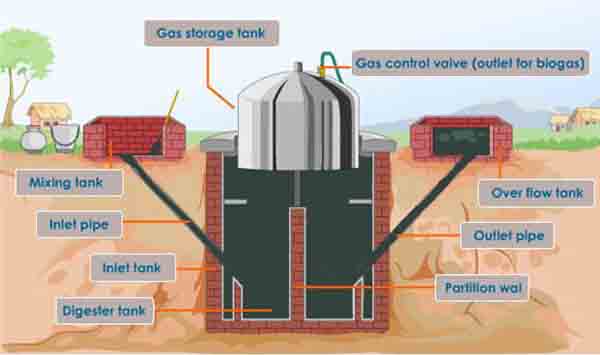Socrates said: “

energy, or soul is separate from matter, and that the universe is made of energy – which was there before mankind and mater like the earth came along.

Einstein said. “Everything is a energy. ”
Quantum physics says when you go deeper to the atom, you are going to find only waves of electric energy, nothing else.
Bioenergy has been here ever since life was created, is here in present, and it will be here for whatever mankind is going to do with it. Only one thing is good to know how to get advantage of BIOENERGY.
Fossil fuel is running out of battery, nuclear power is threaten us very badly see Chernobyl, Fukushima. Gold is pushing prices up to the sky. Food industry, manufacturing food which is not worthy eat. and add, add, add…
Check this out around. Biodiversity of forest, rain forest. Until mankind did not touch it, we have time to explore those ecosystems by our own eyes, and to learn how we can make symbiosis with nature, before we ruin it all out.
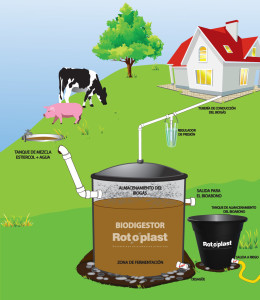 One of many sources of Bioenergy is bio digester. This sofisticated thing is really eating our waste and producing methane. Our society, and our life style are producing so much waste, and waste management it just covering it with soil and that’s it. We waste too much energy, and that energy could be renewable almost on 95%. Are we smart or stupid I would say second is right answer.
One of many sources of Bioenergy is bio digester. This sofisticated thing is really eating our waste and producing methane. Our society, and our life style are producing so much waste, and waste management it just covering it with soil and that’s it. We waste too much energy, and that energy could be renewable almost on 95%. Are we smart or stupid I would say second is right answer.
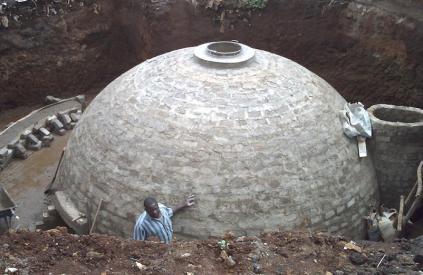 Biogas Technology
Biogas Technology
Biomethane (biogas) is an alternative and renewable energy source produced through the anaerobic (oxygen free) digestion of organic matter whereby the organic matter is converted into a combustible biogas rich in methane (CH4) and a liquid effluent. In general, biogas consists of 55 percent to 80 percent methane and 20 percent to 45 percent carbon dioxide (CO2). However, depending on the source of the organic matter and the management of the anaerobic digestion process, small amounts of other gases such as ammonia (NH3), 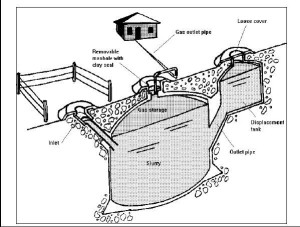 hydrogen sulfide (H2S), and water vapor (H2O) may be present. It is the methane component of the biogas that will burn or produce energy. The gas can be used to generate heat or electricity or both. It can be burned in a conventional gas boiler to produce heat for nearby buildings or to heat the digester, or used in a gas engine to produce electricity. As the organic material (feedstock) is added to the system, the digested effluent is pumped from the digester. The effluent can be stored in a tank and later applied to the land at an appropriate time as a fertilizer without further treatment. The solids can be composted prior to sale for use as a compost or animal bedding. The liquid still contains nutrient that can be sold or used on the farm as a liquid fertilizer as part of a crop nutrient management plan. Basic material flow in an anaerobic digestion system.
hydrogen sulfide (H2S), and water vapor (H2O) may be present. It is the methane component of the biogas that will burn or produce energy. The gas can be used to generate heat or electricity or both. It can be burned in a conventional gas boiler to produce heat for nearby buildings or to heat the digester, or used in a gas engine to produce electricity. As the organic material (feedstock) is added to the system, the digested effluent is pumped from the digester. The effluent can be stored in a tank and later applied to the land at an appropriate time as a fertilizer without further treatment. The solids can be composted prior to sale for use as a compost or animal bedding. The liquid still contains nutrient that can be sold or used on the farm as a liquid fertilizer as part of a crop nutrient management plan. Basic material flow in an anaerobic digestion system.
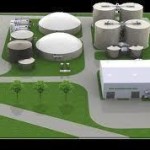 Sources of organic matter that have been used to produce biogas include animal manure, sewage sludge, municipal solid waste, food-processing wastes, and industrial wastes.
Sources of organic matter that have been used to produce biogas include animal manure, sewage sludge, municipal solid waste, food-processing wastes, and industrial wastes.
A typical biogas system consists of manure collection, anaerobic digestion, storage for digester effluent, and gas handling and gas use equipment.
Anaerobic digesters have been used successfully in municipal and industrial wastewater treatment plants and on a number of livestock farms for many years. However, the use of anaerobic digestion technology on livestock farms in Canada for manure treatment and energy production has increased over the past few years.
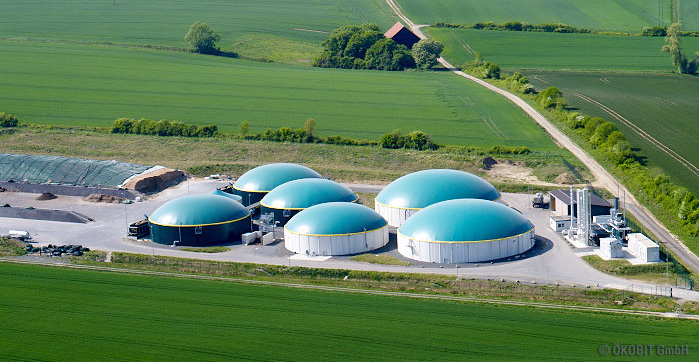 Properties of Methane
Properties of Methane
Pure methane is an odorless gas made up of one atom of carbon and four atoms of hydrogen. It occurs naturally as a component of “natural gas” and is lighter than air and highly flammable. Methane can form mixtures with air that are explosive at concentrations of 5 percent to 15 percent. Methane is not toxic, but it can cause death due to asphyxiation by displacing oxygen in confined environments or spaces. The heating value of pure methane gas is 1,000 BTU per cubic foot. Additionally, methane is considered to be a powerful greenhouse gas that can remain in the atmosphere for up to 15 years, and is about 20 times more effective in trapping heat in Earth’s atmosphere than carbon dioxide.
Benefits and
Challenges of Biogas Technology
Anaerobic digestion can convert organic wastes into profitable byproducts as well as reduce their environmental pollution potential. Anaerobic digestion offers the following benefits to an 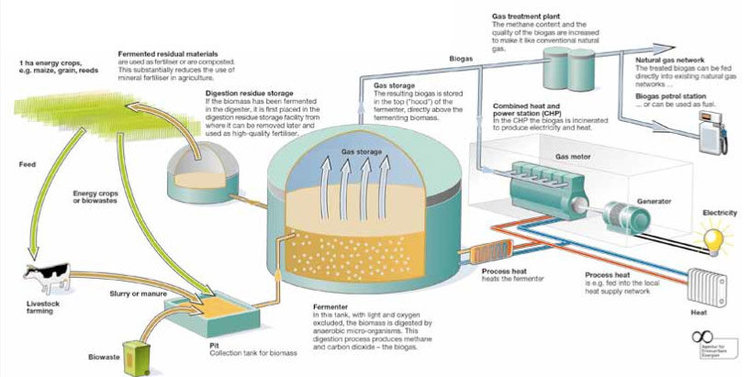 animal feeding operation and the surrounding communities:
animal feeding operation and the surrounding communities:
- Electric and thermal energy.
- Stable liquid fertilizer and high-quality solids for soil amendment.
- Odor reduction.
- Reduced groundwater and surface water contamination potential.
- Potential revenue from sales of digested manure (liquid and solids) and excess electricity and/or processing off-site organic waste.
- Reduction of greenhouse gas emissions; methane is captured and used as a fuel.
- Revenue from possible reuse of digested solids as livestock bedding.
- Potential revenue from green energy and carbon credits.
- The cost of installing an anaerobic digester depends on the type and size of system, type of livestock operation, and site-specific conditions. In general, consider the following points when estimating installation/operating costs:
- Estimate the cost of constructing the system.
- Estimate the labor and cost of operating the system.
- Estimate the quantity of gas produced.
- Components of a typical biogas digester.
- Effluent Storage
- Digester
- Gas Handling System
- Electric Generation System
- Flare or
- Heat Source
- Manure Source and Collection System
- Estimate the value of the gas produced.
- Compare operation costs to benefits from operation (include value as a waste-treatment system and the fertilizer value of the sludge and supernatant).

